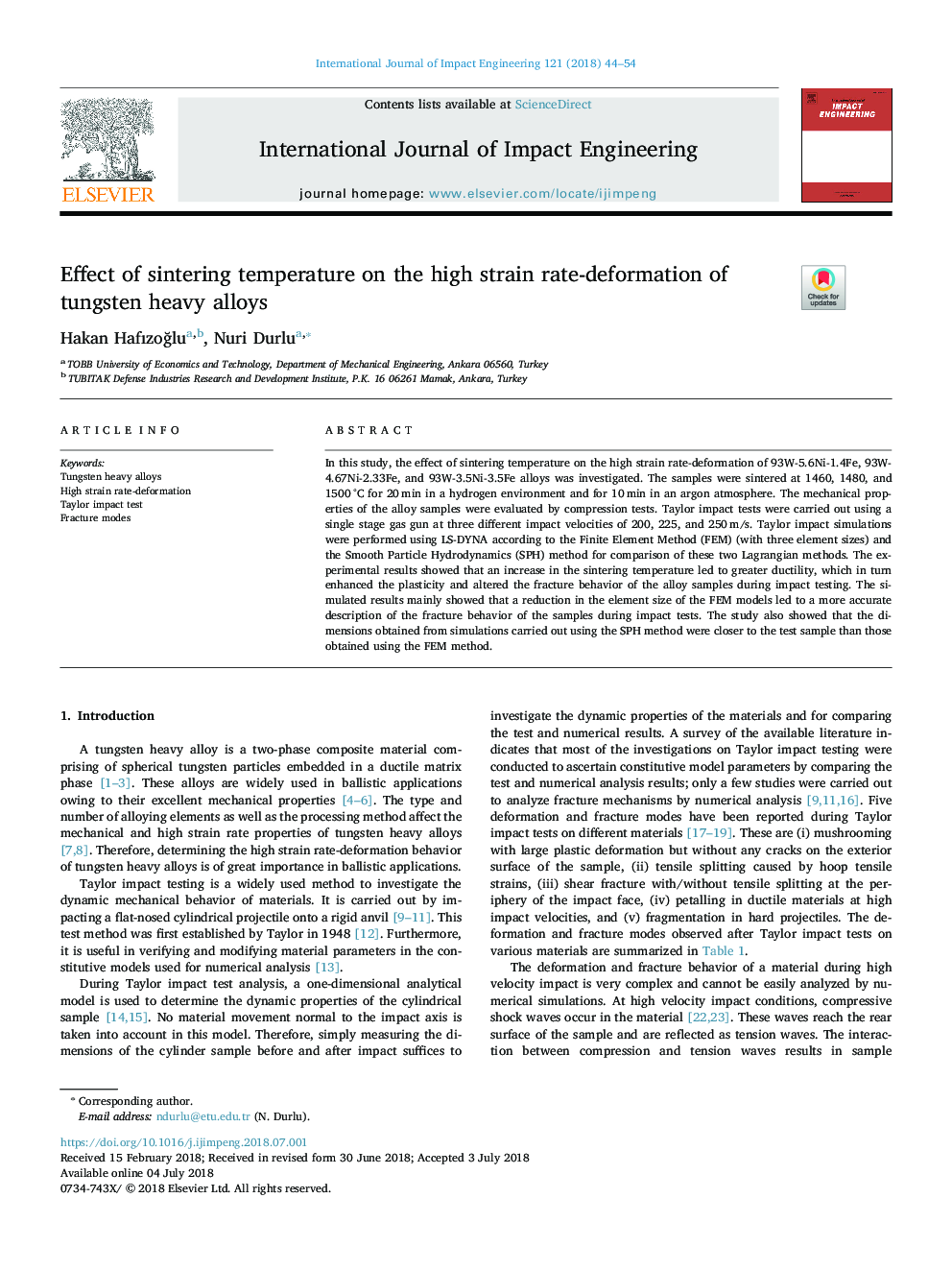| Article ID | Journal | Published Year | Pages | File Type |
|---|---|---|---|---|
| 7172882 | International Journal of Impact Engineering | 2018 | 11 Pages |
Abstract
In this study, the effect of sintering temperature on the high strain rate-deformation of 93W-5.6Ni-1.4Fe, 93W-4.67Ni-2.33Fe, and 93W-3.5Ni-3.5Fe alloys was investigated. The samples were sintered at 1460, 1480, and 1500°C for 20â¯min in a hydrogen environment and for 10â¯min in an argon atmosphere. The mechanical properties of the alloy samples were evaluated by compression tests. Taylor impact tests were carried out using a single stage gas gun at three different impact velocities of 200, 225, and 250â¯m/s. Taylor impact simulations were performed using LS-DYNA according to the Finite Element Method (FEM) (with three element sizes) and the Smooth Particle Hydrodynamics (SPH) method for comparison of these two Lagrangian methods. The experimental results showed that an increase in the sintering temperature led to greater ductility, which in turn enhanced the plasticity and altered the fracture behavior of the alloy samples during impact testing. The simulated results mainly showed that a reduction in the element size of the FEM models led to a more accurate description of the fracture behavior of the samples during impact tests. The study also showed that the dimensions obtained from simulations carried out using the SPH method were closer to the test sample than those obtained using the FEM method.
Related Topics
Physical Sciences and Engineering
Engineering
Mechanical Engineering
Authors
Hakan HafızoÄlu, Nuri Durlu,
